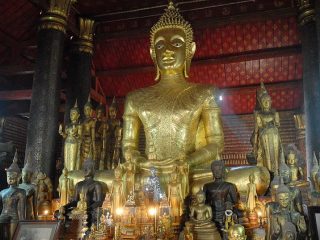When construction began at the dawn of the 12th century, the King Suryavarman II would not have imagined that he was laying the foundation for what was to become the largest religious building even in the modern world. Hence, it is understandable how the Angkor Wat has propelled itself to become the national symbol of Cambodia. The silhouette of the Angkor Wat appears on the national flag which was originally created in 1948 at the time of gaining independence.
At the inception, the temple was dedicated to Lord Vishnu, as the incumbent king followed Hinduism. The centre functioned as the state temple and the capital during the reign of the Khmer Kings and the architecture reeked of traditional Khmer designs. Towers loomed in corners and the entryway was well protected with a moat.
Towards the latter part of the 13th century with the adoption of Buddhism by a majority of the population, the temple became a place of worship of the Buddhists. Up to date, more than 90% of the inhabitants of Cambodia follow Theravada Buddhism. As a result the Angkor Wat is a Buddhist shrine, treated with much reverence by its visitors from all over the world. However, the inscriptions, decorations and carvings show distinct Hindu influence as they had been created at the inauguration itself.
Classic tales of India such as the Ramayanaya and Maabharatha are depicted on the walls and galleries of the structure. Today several private bodies and governments of the world have voluntarily made efforts to preserve and manage the complex which is a heritage of the Buddhist and Hindu world.
The venerated place of the South East Asian nation has been in the news not only for its mammoth size and religious significance, but also as the venue for filming the ‘Tomb Raider’ an adventure starring Angelina Jolie. Many Cambodians tie the knot at the temple in the presence of their religious leaders.
Slightly south of Angkor Wat you will find many an Angkor hotel that suits your style and expectations. Alila Sothea Siem Reap is among the most sought after Siem Reap hotels by pilgrims, holiday makers, traders and local tourists.




